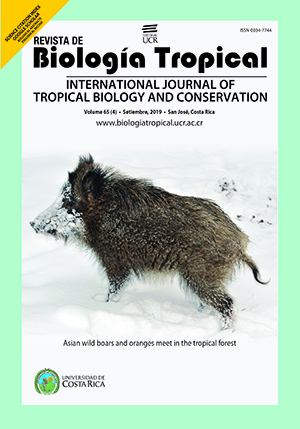Abstract
Quantification of steroid hormones in molluscs is performed with different techniques, using the hemolymph or gonads. Lobatus gigas is a Caribbean gastropod of commercial interest indexed in CITES as a protected species. Hormonal studies of this species are as yet unavailable. The objective of this study is to determine the presence of the steroid hormones 17ß - estradiol and progesterone in L. gigas using a non-invasive method, and to compare two techniques for their quantification. Every two months over the course of one year, the feces of ten organisms were collected in Xel-Ha park Quintana Roo, México. The samples were analyzed with High resolution liquid chromatography and Enzyme-linked immunosorbent assays. The values of both hormones were highest during the months of March to September then decreased during November and January. Comparison of the concentrations obtained with HPLC and EIA, presented similar results for 17β-estradiol (Passing - Bablock r = 0.673; mean differences -0.17 ng / ml). In contrast, the progesterone results with both techniques showed no adjustment (Passing - Bablock r = 0.389; mean differences -1.43 ng / ml). Our results suggest that the enzyme-linked immunosorbent assay is suitable for the study of hormones in L. gigas. The knowledge generated will allow the monitoring and selection of breeding organisms that are conditioned in laboratories and thus will not affect the collection of wild egg masses.
##plugins.facebook.comentarios##

This work is licensed under a Creative Commons Attribution 4.0 International License.
Copyright (c) 2019 Fabiola Chong Sánchez, Martha Enriquez Diaz, Dalila Aldana Aranda







